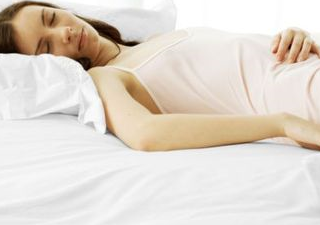Urinary tract infection is the inflammatory response of the urinary tract epithelium to bacterial invasion. Depending on the site of infection, it can be divided into upper urinary tract infection and lower urinary tract infection (below the bladder is the lower urinary tract, and above is the upper urinary tract). According to the route of infection, it can be classified as descending infection (from the blood and kidneys downwards) and ascending infection (from the urethra upwards). It can also be classified based on the cause of the disease as specific infections (such as tuberculosis) and nonspecific infections (common bacteria). When we talk about urinary tract infections in women, it mostly refers to nonspecific ascending infections. Symptoms of urinary tract infection may include frequent urination, urgency, pain during urination, discomfort in the bladder area or perineum, burning sensation in the urethra, and possibly fever.
Under normal circumstances, the human body has a set of defense measures against invading bacteria, ensuring that harmful bacteria cannot cause trouble. For instance, factors like the pH of normal urine, high (or low) osmotic pressure, and high urea levels are not conducive to the growth of certain bacteria. Bacteria need to reach a certain quantity to cause damage, and urine can flush bacteria out of the body from top to bottom before they gather in significant numbers. However, if urine is held back frequently and not regularly expelled, it can become a source of nutrients for some bacteria, aiding their reproduction within the body.
The male urethra starts at the internal urethral orifice and ends at the external urethral orifice at the tip of the penis, measuring approximately 18 centimeters in adults (as shown in the diagram). External bacteria attempting to enter the body must first undergo an 18-centimeter marathon, during which they are likely to be washed out by a stream of urine, thus failing their mission.
Menstruation and sexual activity play roles in bacterial invasion. Menstrual blood serves as an optimal culture medium for bacteria, necessitating proper hygiene, especially cleaning and disinfecting menstrual products, to reduce bacterial invasion. During sexual intercourse, bacteria from the anterior urethra can be mechanically pushed into the posterior urethra and bladder through pushing and squeezing movements.
Never hold your urine. Avoiding urination is a bad habit that directly leads to urinary tract infections. Delaying urination disrupts the regular process of urination, allowing urine to accumulate in the bladder for extended periods, increasing the chances of bacterial infection. Furthermore, holding urine raises the pressure inside the bladder, making it easier for bacteria to travel up the ureters, potentially causing pyelonephritis. Prolonged urine retention in the bladder due to frequent holding weakens the bladder wall elasticity, dulls the pressure receptors on the bladder, leading to a decreased urge to urinate. Additionally, the bladder’s contraction strength decreases, resulting in increased residual urine after urination, potentially leading to urinary retention. Reduced urination frequency prevents timely excretion of metabolic waste, making individuals more prone to bladder inflammation and even bladder cancer.
Due to the unalterable physiological anatomy of women, the correct approach is to continuously enhance immune defenses and avoid antibiotic abuse. When urinary tract infections are recurrent and difficult to cure, it is important to identify the underlying causes under medical guidance, complete the full treatment course, and eliminate the root of the problem. Regular hygiene maintenance of the urethral opening, vaginal opening, and anal area, especially during menstruation or for patients with gastrointestinal diseases, is crucial for the cleanliness and hygiene of these “three entrances.”


